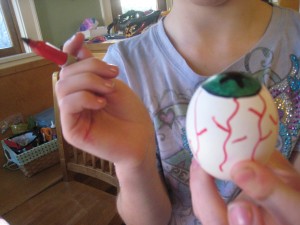Tag: safe’
Goblin Goo
- by KitchenPantryScientist
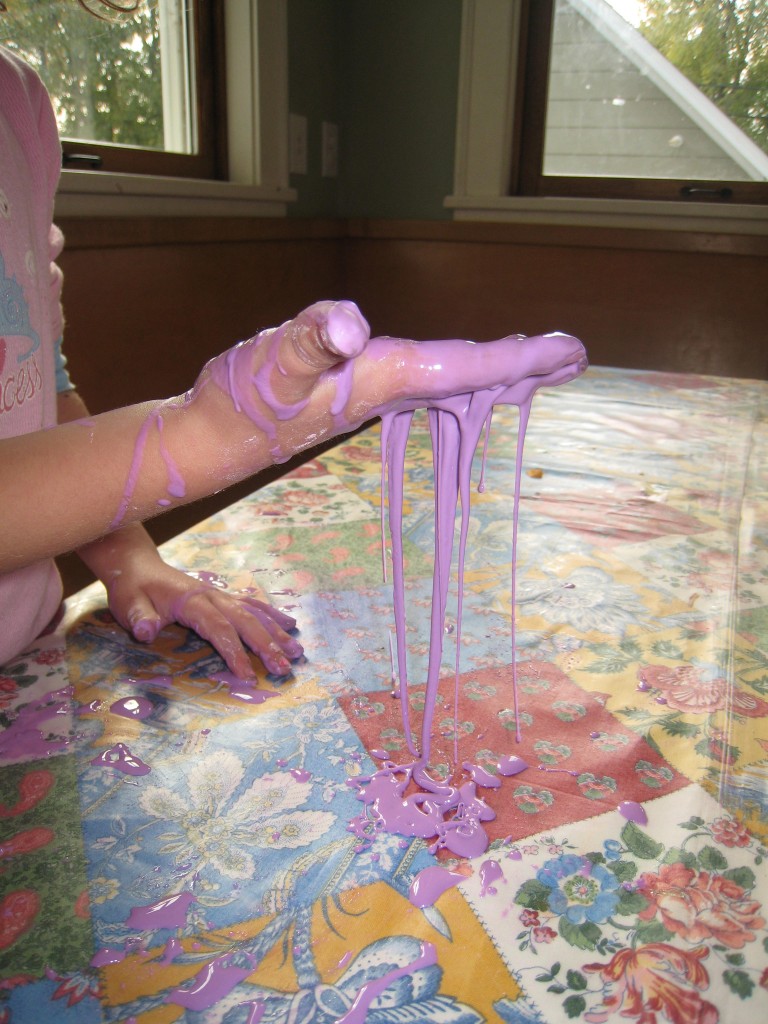 This experiment is easy, non-toxic and so much fun that it is worth every bit of the mess it makes. Your kids will love it!
This experiment is easy, non-toxic and so much fun that it is worth every bit of the mess it makes. Your kids will love it!
All you need is a cup of cornstarch and half a cup of water with a little food coloring in it (purple and green are fun for Halloween and red would be gross!) Mix the two ingredients to a medium-size bowl with a spoon or your fingers. The goo should be the consistency of syrup.
Now, play with the mixture! You will discover that it behaves like a solid when you agitate it, or move it quickly, and like a liquid when you let it sit still. Pour some onto plates or into bowls if you want to. We poured it directly onto our table which was pretty messy, but lots of fun! Hold a handful on your palm and watch it drip between your fingers! Roll it into a ball. If it gets too dry, just add a little more water. You can easily clean the goo off of flat surfaces using a plastic spatula. Wash it off hands with water.
Cornstarch molecules are like long ropes. When you leave them alone, or move them slowly, they can slide past each other and look like a liquid. However, if you squeeze them, stir them or roll them around in your hands, the ropey molecules look and feel more like a solid. Materials like cornstarch goo are known as non-Newtonian fluids, since they don’t have the normal properties of either a liquid or a solid.
Click here to watch my video on how to make cornstarch goo.
Mad Scientist’s Green Slime is a homemade polymer that’s as much fun to play with as it is to make. Here’s a demonstration I did on our local morning show: Halloween Science on Kare 11 Sunrise show (It will start playing on the right side of the website after a short ad.)
Alien Monster Eggs
- by KitchenPantryScientist
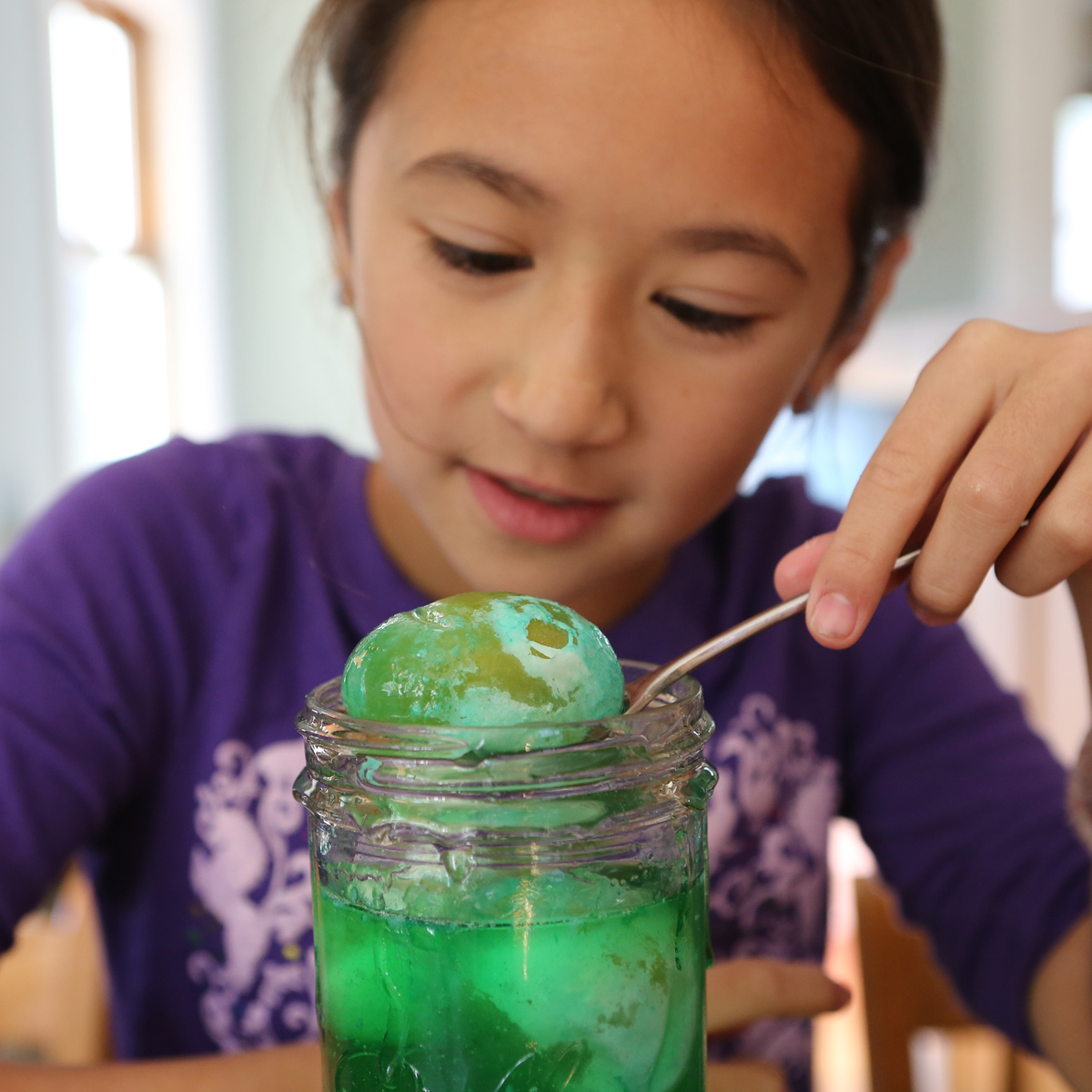
This is a great Halloween eggsperiment and a jar of them would make a spooky centerpiece for a Halloween party!
Put some raw eggs into jars and cover the eggs with (white or cider) vinegar. It’s fun to use permanent markers to make the eggs look like eyeballs before you put them in the vinegar! Remember to always wash your hands after handling raw eggs, since they can carry a bacteria called Salmonella enteriditis!
Do you notice anything happening to the eggs when you add the vinegar?
Let them sit overnight in the refrigerator and see what they feel like the next day. What happened to the sharpie ink? Before handling the eggs, gently rinse them with water, and be careful not to get vinegar in your eyes, since vinegar is an acid and stings!
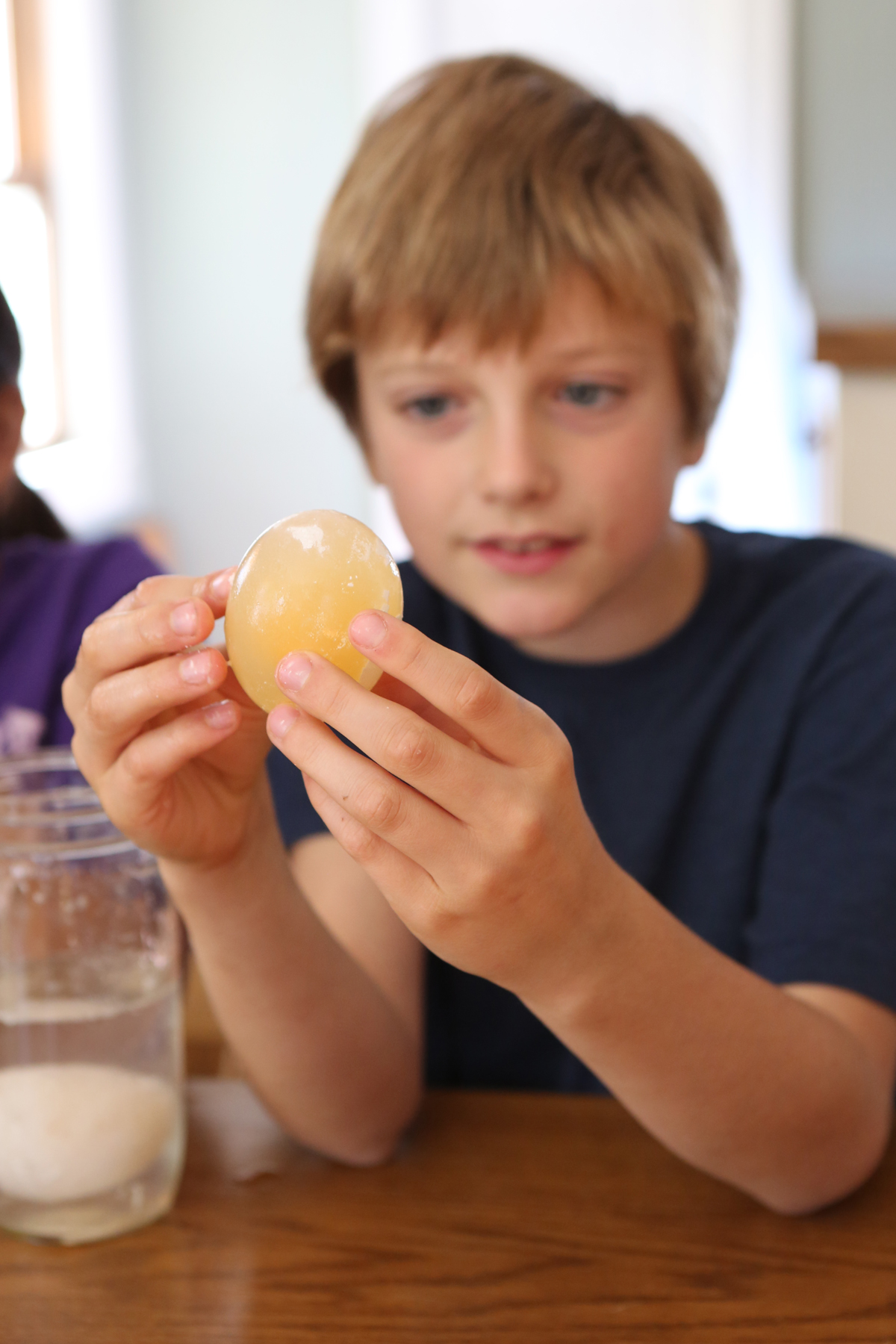
Image from Kitchen Science Lab for Kids (Quarry Books 2014)
Only the membrane of the egg will remain, which is like a rubbery balloon. What does it feel like?
If you want, draw or record what you observed in your science notebook.
What happened? Egg shells are made up of two chemical elements called calcium and carbon, which stick together in calcium carbonate crystals. Vinegar is an acid that break the crystals apart in a chemical reaction. The carbon and vinegar react to form carbon dioxide bubbles, which you probably noticed when you added the vinegar to the eggs.
To make alien monster eggs, return the eggs to the jars. Cover them with corn syrup and add some green food coloring. Leave them for 24 hours in the refrigerator and see how they feel the next day!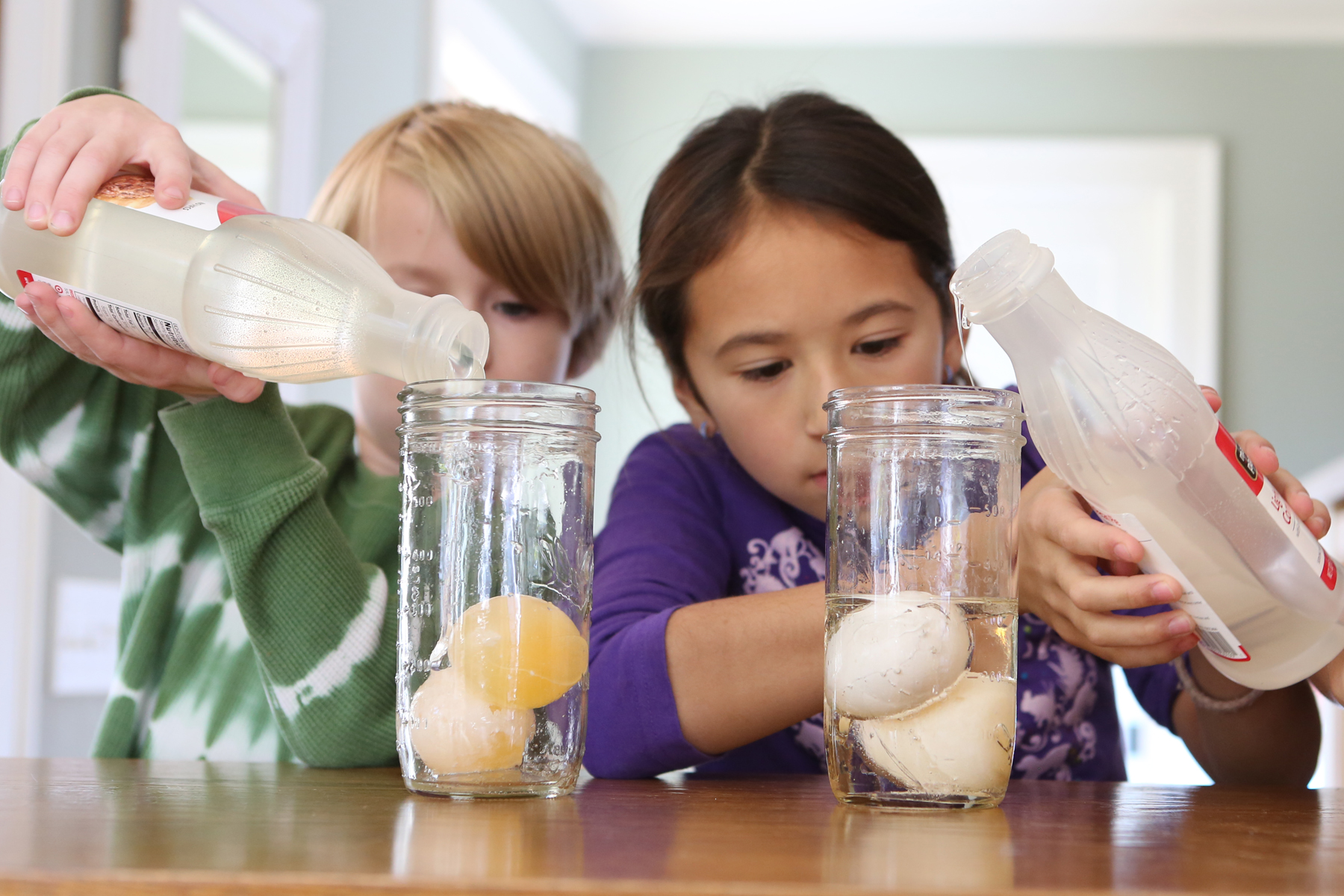
What happens? The balloon-like membrane of the soft eggs let water molecules pass through via a process called osmosis. Corn syrup doesn’t have much water in it, and water molecules move out of the egg into the corn syrup, making the egg shrivel.
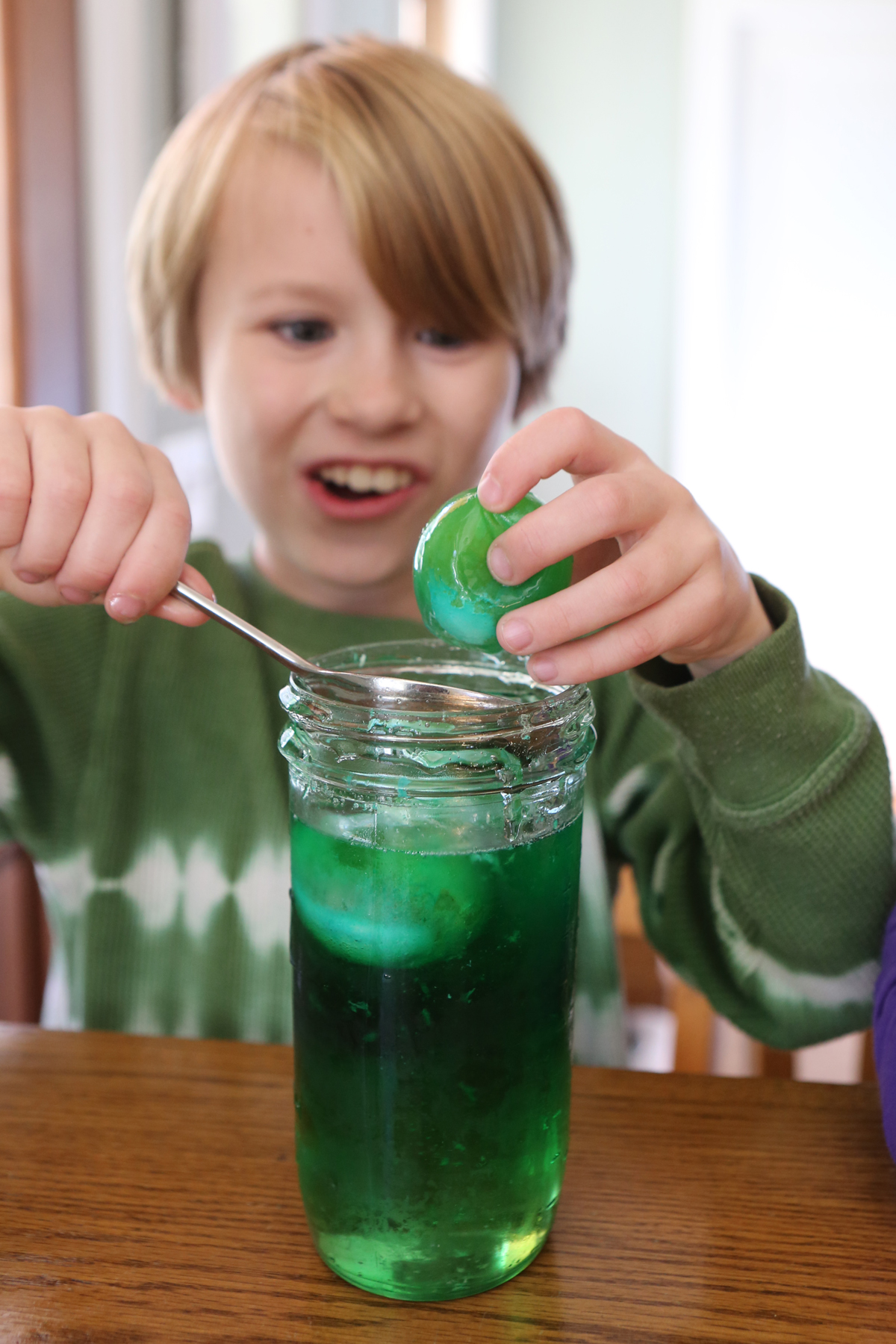
Image from Kitchen Science Lab for Kids (Quarry Books 2014)
If you want to, now try rinsing the eggs and submerging them in water again overnight (in the fridge.)
Happy eggsperimenting!
